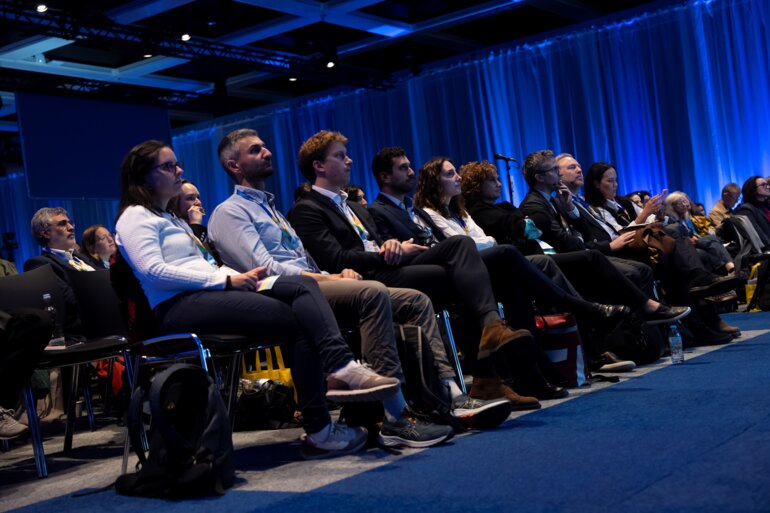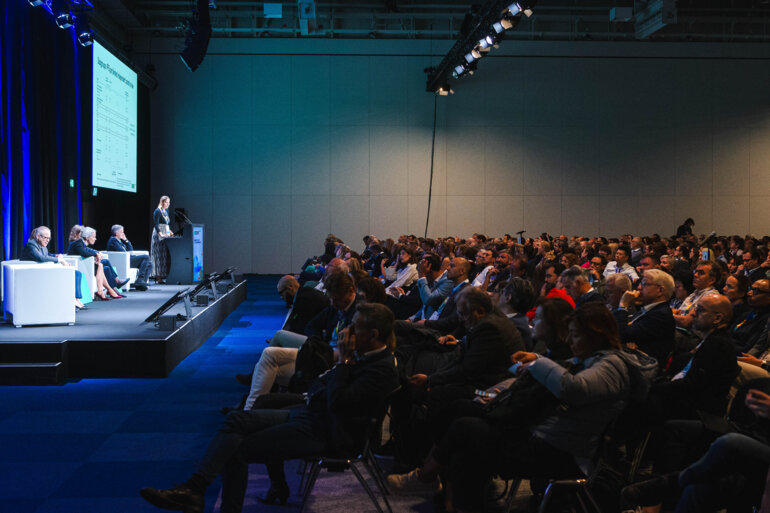The future is in the hands of tools built on combinations of biomarkers as no single biomarker is likely to reflect the complexity of the tumour microenvironment or account for tumour evolution
It is now recognised that biomarkers predicting the likelihood of response, and/or of toxicity, are essential to allow us to better tailor treatments to our patients. The stakes are particularly high for immunotherapy because this type of treatment offers the only real hope of durable disease control in some cancers. However, meaningful biomarkers in this context have proven to be particularly elusive and the quest continues for tools that can be used to predict and measure response in clinical trials across cohorts of patients. Paramount is the identification of pharmacodynamic markers, in addition to predictive tools, that seek to shed light on the evolution of tumours over time and with treatment.
Preclinical investigation lays the foundations of biomarker identification, and we need to ensure that it continues to inform future clinical efforts. Longitudinal profiling of tumours can be conducted relatively easily within tumour models, whereas logistical and ethical considerations, together with tumour heterogeneity, limit what can be usefully achieved in humans. We need to recognise challenges associated with differences between the preclinical and clinical settings. This is illustrated well by findings reporting that depletion of regulatory T cells by anti-CTLA-4 antibodies – which was demonstrated in preclinical models and thought to underpin its anticancer activity (J Exp Med. 2013;210:1695–1710) – has not been shown in the clinic (Clin Cancer Res. 2019;25:1233–1238; Clin Cancer Res. 2019;25:1130–1132; Cancer Cell. 2018;33:649–663.e4). The reasons are as yet unclear, but may include the inherent constraints associated with tissue sampling in humans and the potential biological differences between tumour models and humans.
Circulating tumour (ct)DNA is a very promising candidate for informing whether or not a patient is benefiting from a particular treatment and is not associated with the limitations and risks of serial tumour biopsies and repeated scans. Its potential role is highlighted by a recently published phase III study of the bispecific-protein product tebentafusp in uveal melanoma (N Engl J Med. 2021;385:1196–1206). Among patients with disease progression, survival was longer in those receiving tebentafusp than in those receiving single-agent immunotherapy or chemotherapy, suggesting that patients may experience clinically meaningful benefit despite a lack of evidence on radiological scans. ctDNA reduction may be a more sensitive measure of response than scans, and determining levels of reduction at which patients derive benefit could provide a useful biomarker. However, there are a number of technical issues, including sensitivity of the technique, that need to be addressed before it can be used reliably.
Tumour mutational burden (TMB) began to gain prominence as a potential biomarker around 10 years ago, the concept being that the greater the number of mutations a tumour carries, the more likely it is that some will be processed to neoantigens to stimulate the immune system. TMB is currently approved by the US FDA for use as a companion diagnostic for pembrolizumab use. However, there are still controversies surrounding its general use and more work is needed to unpick the factors underlying the predictive utility of TMB, including the relative importance of the type/quality and consequent immunogenicity of a given mutation, rather than just the number of mutations, present (N Engl J Med. 2014;371:2189–2199).
Early insights into the activity of tumour-infiltrating lymphocyte (TIL) therapy suggest that TMB could be an important predictive tool in patients with advanced melanoma (Nat Commun. 2017;8:1738). A high baseline TMB indicates a greater likelihood that a patient will respond to TILs, possibly because of the increased chance of capturing, and subsequently expanding, the neoantigen-reactive T cells.
Biomarkers of toxicity are a high priority for immunotherapy, not least because side-effects, such as hormone deficiencies, can have profound, life-long consequences, which may be of particular relevance for younger patients. However, outside of pre-existing autoimmune conditions, factors that increase a patient’s risk of toxicity are poorly understood. The finding that patients experiencing toxicity often respond well to treatment highlights the importance of deciphering underlying biology and might inform efforts to decouple anti-tumour and auto-immunity.
The complexities of anti-tumour immune responses mean that any single biomarker is unlikely to be of sufficient use in clinical trials and, indeed, in clinical practice. Instead, we need to look for a combination of factors that take into account the dynamic nature of the immune response and tumour evolution with time. This calls for an increase in collaborative efforts between laboratory and clinical researchers. And the goal? To develop a panel of predictive and pharmacodynamic biomarker tools that, in the first instance, help us to better understand the biological basis of response, resistance and toxicity and that, in due course, inform prospective efforts including treatment stratification.
What should be the optimal biomarker analysis plan to design clinical trial? ESMO Immuno-Oncology Congress 2021
Educational Session, 10.12.2021, h. 14:30 – 16:00, Congress Virtual Platform







